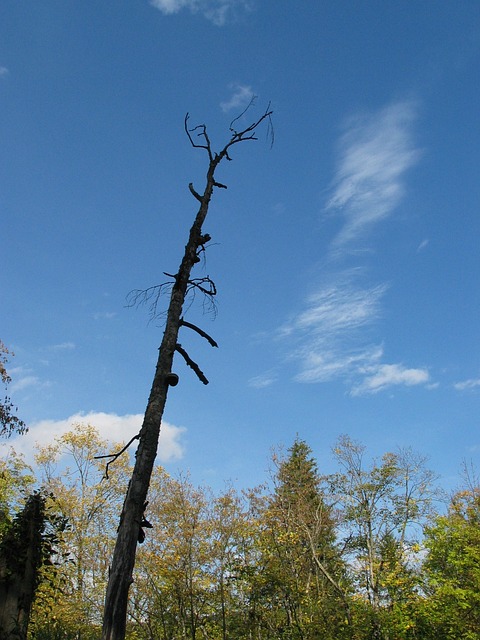Expert Dead Tree Removal Lewisville: Safe Extraction Services for Your Property
In bustling Lewisville, TX, safe dead tree removal is vital for public safety and property protectio…….
Dead Tree Removal Lewisville Tx Matters - Why You Can\\\'t Ignore It
Uncover dead-tree-removal-lewisville-tx.instantupdate.net. - The Layman\\\'s Guide
In the bustling metropolis of Lewisville, Texas, the topic of dead tree removal has emerged as a critical aspect of urban forestry and environmental management. This article delves into the intricacies of dead tree removal services within the city limits of Lewisville, exploring its significance, processes, and the broader impact it has on the local community and environment. By understanding the dynamics of this practice, residents and stakeholders can make informed decisions to preserve and enhance their urban green spaces.
Dead tree removal refers to the process of identifying, assessing, and safely extracting dead or diseased trees from residential, commercial, or public properties in Lewisville. This includes trees that pose a risk to nearby structures, infrastructure, or public safety due to their weakened state. The primary goal is to mitigate potential hazards while maintaining the city’s aesthetic appeal and ecological balance.
The process involves several key steps:
Inspection: Certified arborists conduct thorough inspections to identify dead or diseased trees. They assess tree health, structural integrity, and any potential risks.
Risk Assessment: Based on the inspection, arborists determine the level of risk posed by the tree, considering factors like proximity to buildings, power lines, and pedestrian areas.
Planning: A removal plan is developed, outlining the best method for safe extraction, disposal, and any necessary aftercare, such as stump grinding.
Removal Execution: Trained professionals use specialized equipment to remove the tree, ensuring minimal impact on surrounding areas.
Disposal and Aftercare: Proper disposal of the removed trees and stumps is crucial for environmental sustainability. Grounding or recycling programs may be implemented.
Lewisville, known for its vibrant and lush green spaces, has long recognized the importance of tree management. Over time, the city’s urban growth and changing climatic conditions have led to an increased focus on dead tree removal as a proactive safety measure. The practice gained prominence in recent years due to several high-profile incidents involving falling trees, emphasizing the need for regular maintenance.
Dead tree removal practices vary worldwide, influenced by regional climates, cultural values, and available resources. Lewisville’s approach draws from international best practices, particularly those in temperate climates with similar environmental challenges. The city benefits from global knowledge sharing, ensuring its methods remain effective and up-to-date.
Across North America, there is a growing trend towards proactive tree management, driven by increased urban density and climate change. Lewisville aligns with this trend, prioritizing dead tree removal to mitigate risks associated with extreme weather events, such as storms and hurricanes.
The dead tree removal market in Lewisville is dynamic, driven by factors like seasonal demand, tree species, and the extent of damage. Local businesses offer competitive pricing, catering to residential, commercial, and municipal clients. The market’s health reflects the city’s commitment to maintaining its green infrastructure.
Investments in dead tree removal services often yield significant returns in terms of property value preservation and safety. Property owners and developers recognize the long-term benefits, leading to steady investment in professional tree care.
Modern equipment has revolutionized dead tree removal, enhancing efficiency and safety. Hydraulic cranes, specialized saws, and advanced climbing gear enable arborists to tackle complex removals with minimal disruption. These tools contribute to faster completion times and reduced labor costs.
Technological advancements also support data-driven tree management. Apps and software platforms aid in inventorying trees, tracking removal progress, and communicating with clients. This digital approach improves overall efficiency and enhances client satisfaction.
Lewisville’s Municipal Code regulates dead tree removal, ensuring safety standards and environmental protection. Permits are required for removals within city limits, allowing officials to monitor and control the process. The code outlines specific guidelines for tree disposal, stump grinding, and restoration efforts.
State and federal agencies provide additional guidance and oversight, particularly regarding hazardous material disposal and environmental impact. These regulations ensure that dead tree removal practices align with broader ecological conservation efforts.
Challenges in dead tree removal include:
To address these issues:
In the heart of downtown, an aging oak tree posed a significant risk to nearby buildings. The city initiated a dead tree removal project, removing the tree and replacing it with a younger, healthier specimen. This revitalized the area, attracting new businesses and enhancing pedestrian safety.
A residential neighborhood faced a severe tree disease outbreak, affecting many mature maples. Local arborists stepped in, conducting mass removal and replacement efforts. The initiative not only mitigated hazards but also fostered a sense of community, with residents actively participating in tree planting events.
The future of dead tree removal in Lewisville looks promising, with potential growth areas including:
Dead tree removal in Lewisville, TX, is a vital component of urban forestry, ensuring the safety and beauty of the city’s green spaces. By understanding its historical context, economic implications, and technological advancements, we can appreciate the complexity and importance of this practice. Through proactive management, effective policies, and community engagement, Lewisville can continue to nurture a thriving urban forest while mitigating risks associated with dead trees.
Q: How do I know if a tree on my property needs removal?
A: Look for signs of decay, disease, or structural weakness. If the tree poses a risk to your property or nearby structures, it’s best to consult a certified arborist for an expert assessment.
Q: What are the typical costs associated with dead tree removal?
A: Costs vary based on tree size, accessibility, and disposal requirements. Local businesses provide competitive pricing, offering transparent estimates for various services.
Q: Can I remove trees on my property without a permit?
A: No, Lewisville’s Municipal Code requires permits for tree removals within city limits. Permits ensure safety standards and environmental protection during the removal process.
Q: How do I choose a reputable dead tree removal service?
A: Look for certified arborists with experience and positive reviews. Ensure they have the necessary equipment and adhere to local regulations. Reputable companies will also provide detailed estimates and aftercare plans.
Q: What happens to the wood removed from dead trees?
A: Proper disposal and recycling methods are employed. Tree material may be composted, chipped for mulch, or used in various industrial processes, minimizing environmental impact.

In bustling Lewisville, TX, safe dead tree removal is vital for public safety and property protectio…….

Assessing potential dead tree removal in Lewisville, TX requires looking beyond apparent lifelessnes…….